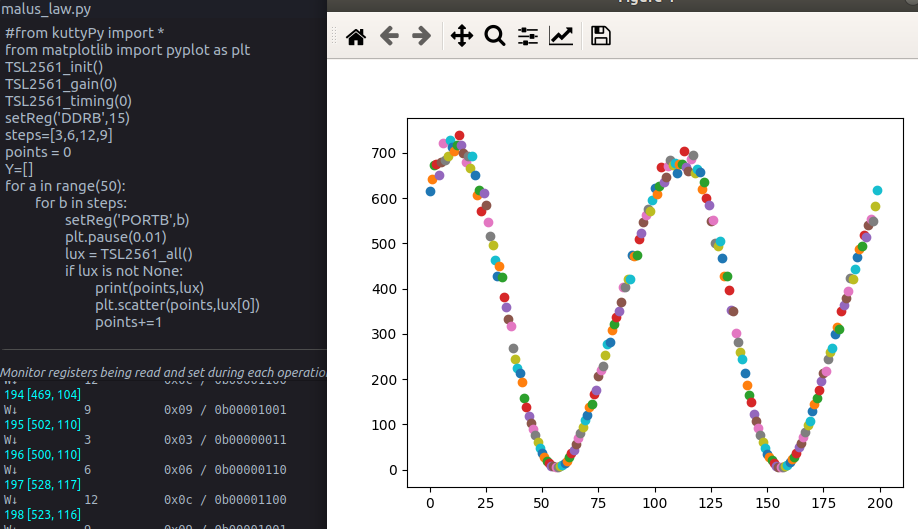Optics: Malus Law
Experiment
results from a Malus Law experiment carried out using a TSL2561 Luminosity sensor, a laser diode, two pieces of polarizers
ripped out of an LCD screen, and a hollow shaft stepper motor.
 The analyzer was rotated step by step, and light intensity was recorded using the light sensor. It confirms maximum transmission
when both polarizer and analyzer are parallel, and minimum when orthogonal.
The analyzer was rotated step by step, and light intensity was recorded using the light sensor. It confirms maximum transmission
when both polarizer and analyzer are parallel, and minimum when orthogonal.
It does not go to exactly zero because ambient light was not fully blocked by leveraging a dark room.
However, curve fitting showed that the shape was sinusoidal (cos^(theta))